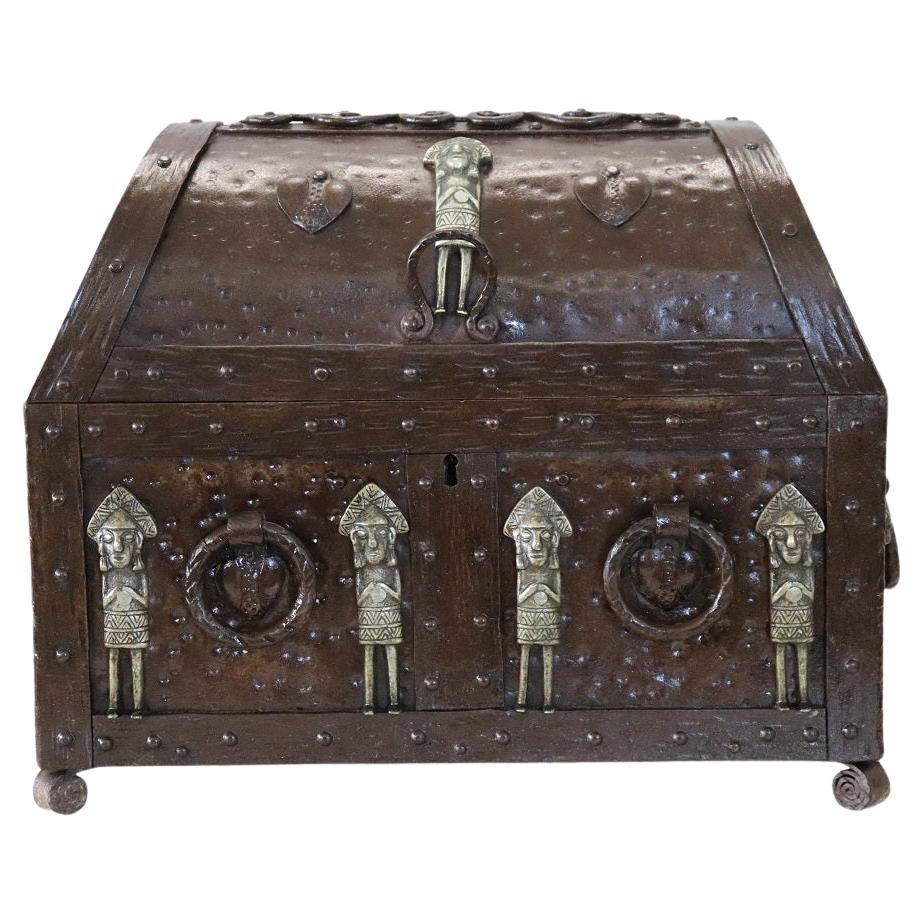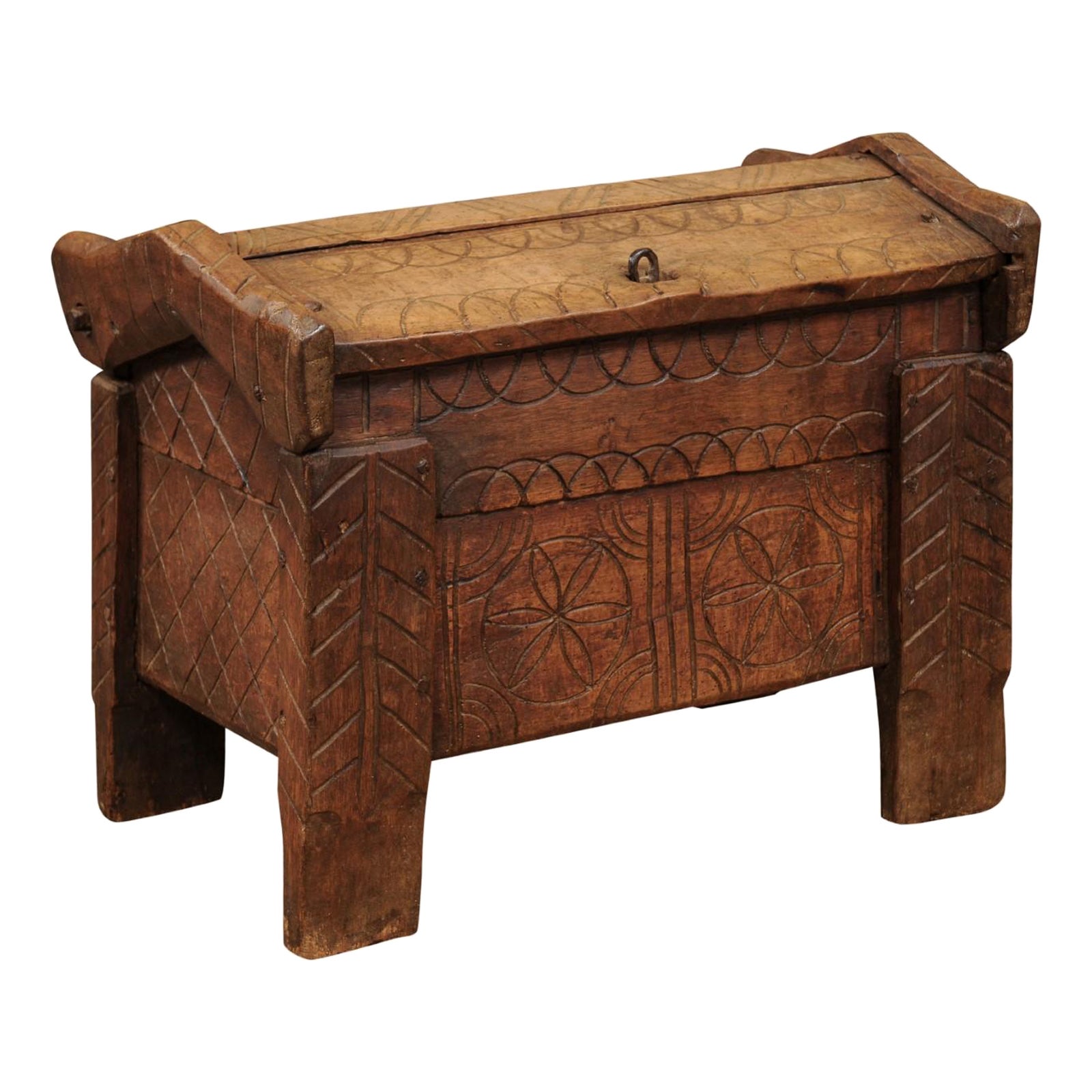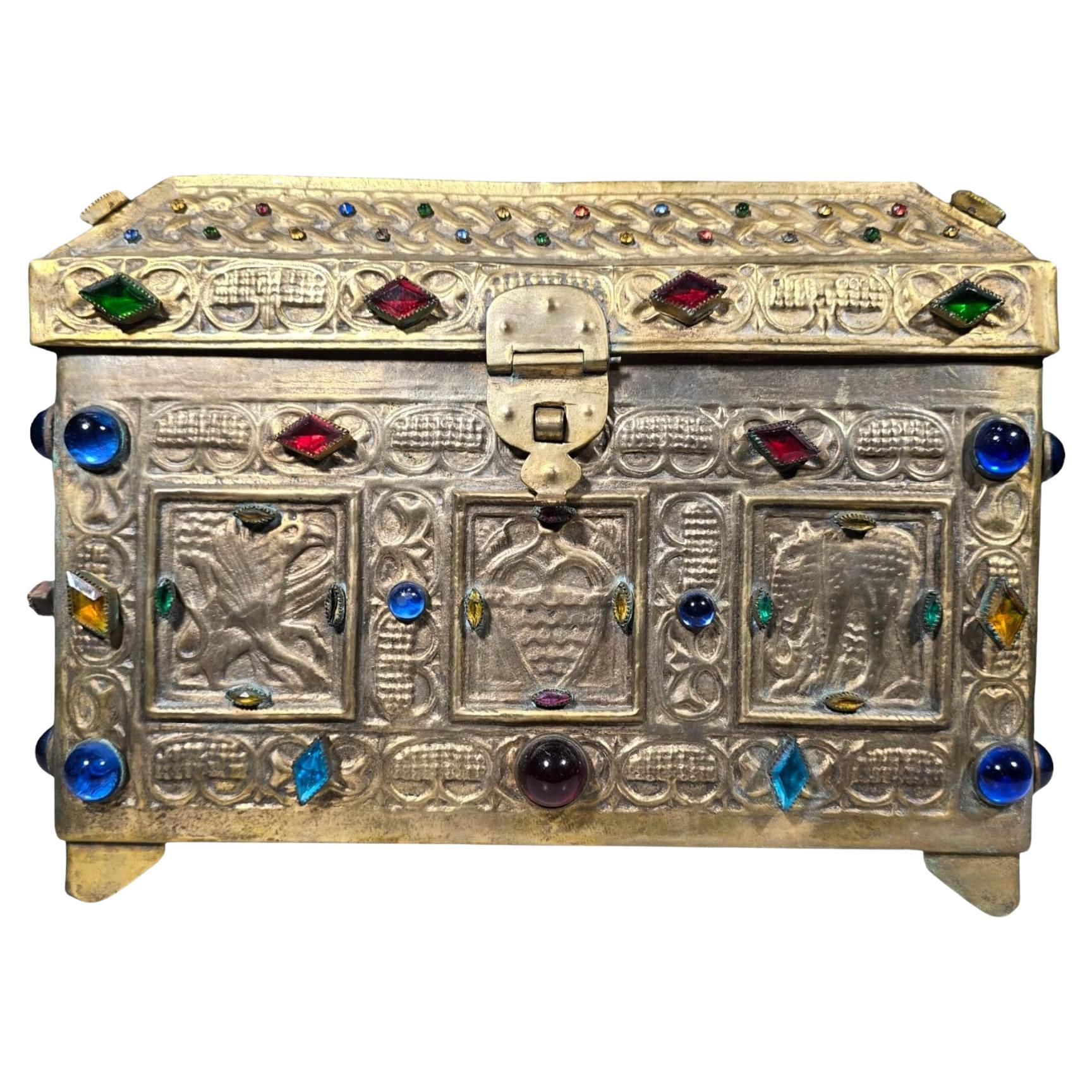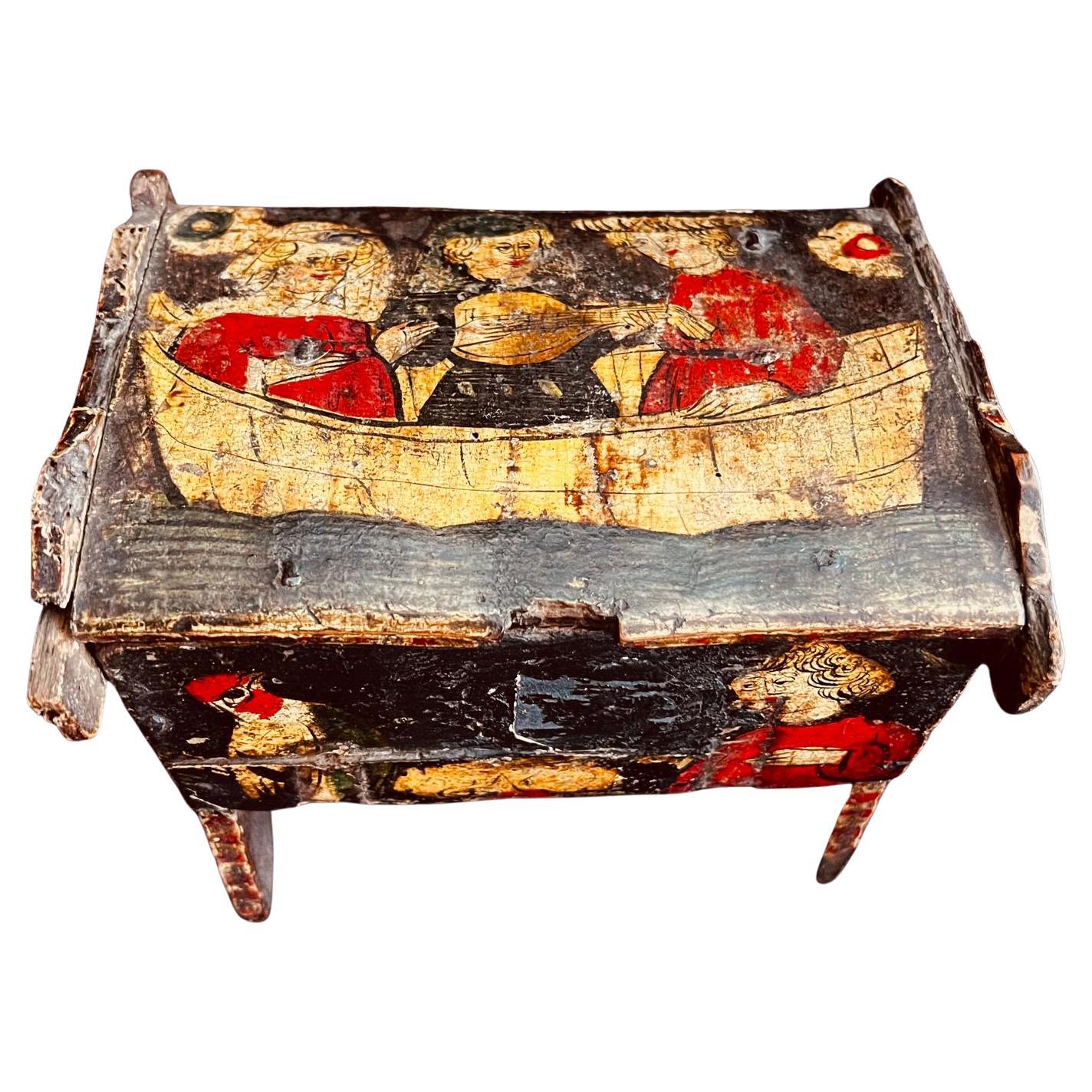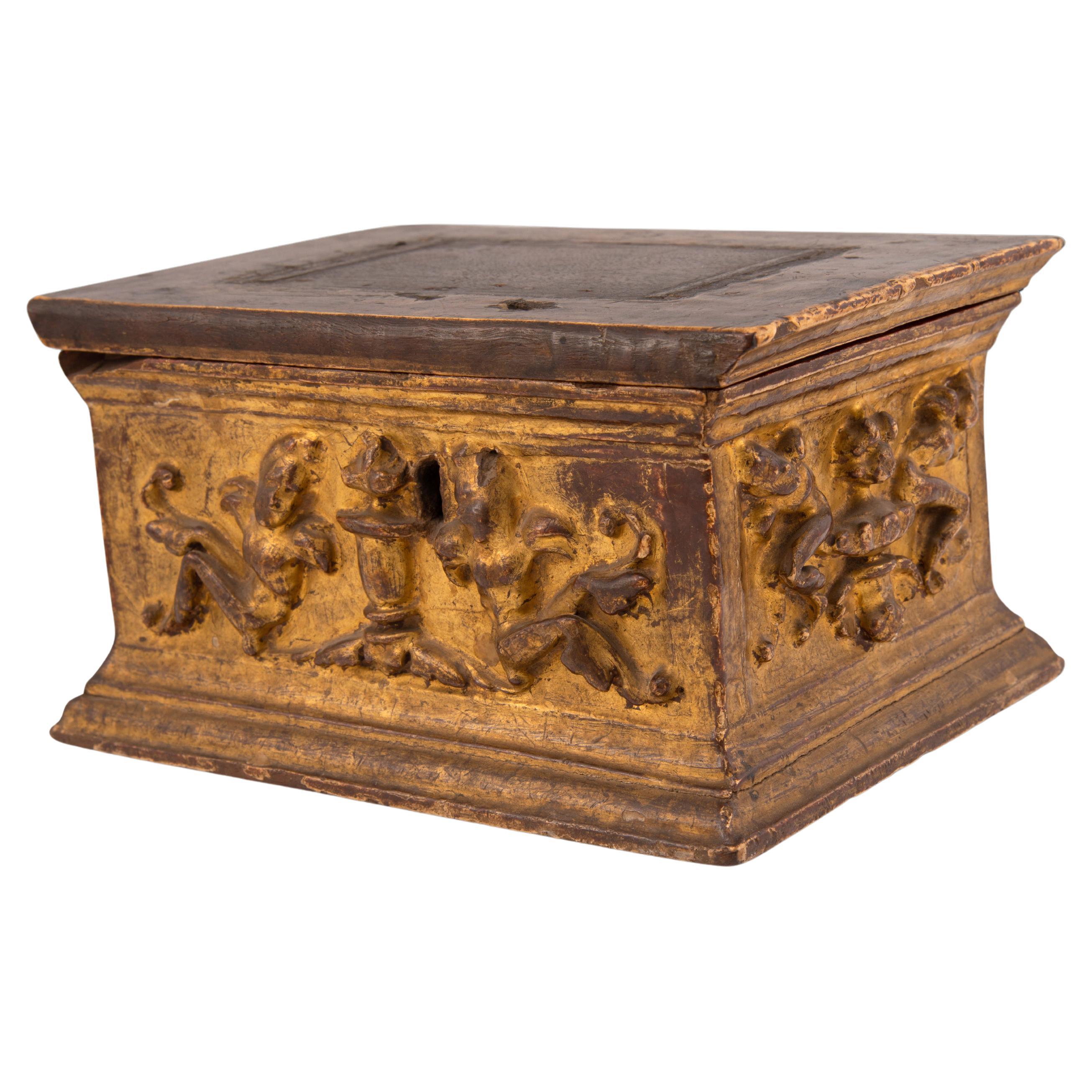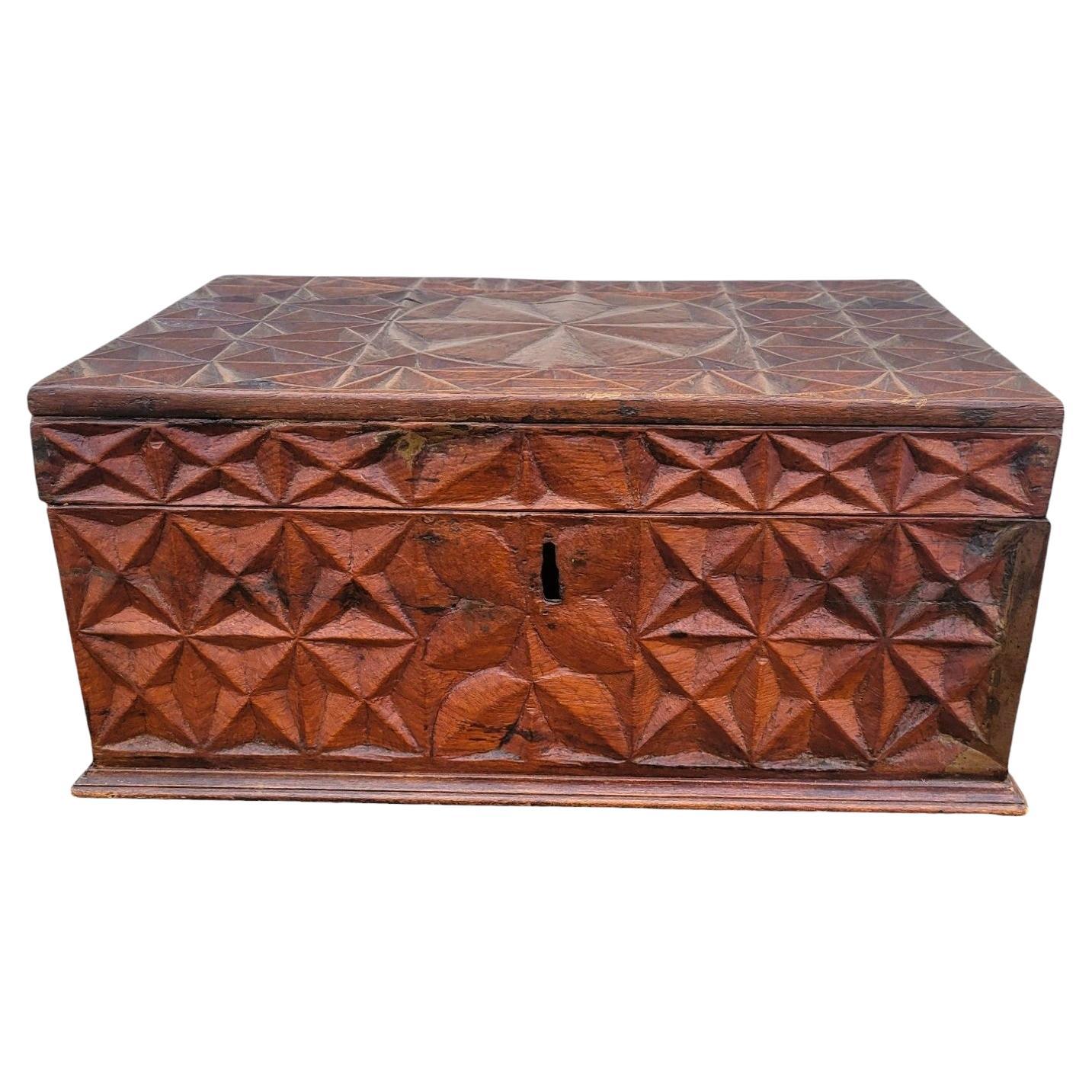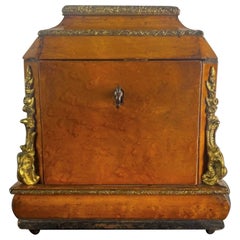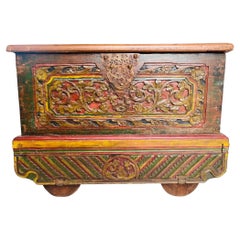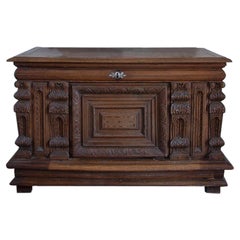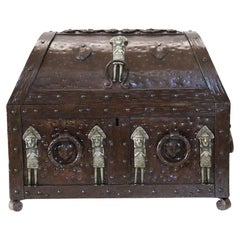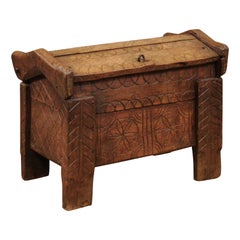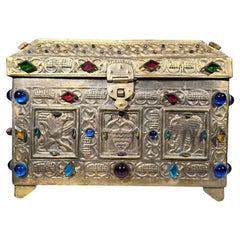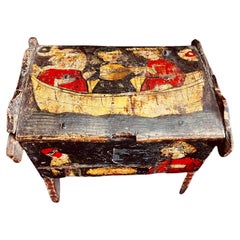Items Similar to Very Rare Casket Minnekästchen or Box, Germany or Italy, 15th Century
Want more images or videos?
Request additional images or videos from the seller
1 of 11
Very Rare Casket Minnekästchen or Box, Germany or Italy, 15th Century
$14,314.94
£10,583.22
€12,000
CA$19,689.98
A$21,886.63
CHF 11,472.50
MX$267,288.76
NOK 143,227.60
SEK 134,750.45
DKK 91,355.80
About the Item
Wooden coffret, call minnekästchen, engraved with a dog, a hare and foliage with
polychromy remains. During the Middle Age, the hare is a symbol of fertility, joy and represents the Christ’s resurrection. The top is adorned by a frieze of rhombuses and marked with a slot.
Old collector’s label.
Southern Germany or Northern Italy, 15th century.
- Dimensions:Height: 5.91 in (15 cm)Width: 12.6 in (32 cm)Depth: 5.91 in (15 cm)
- Style:Gothic (Of the Period)
- Materials and Techniques:
- Place of Origin:
- Period:15th Century and Earlier
- Date of Manufacture:1450
- Condition:Wear consistent with age and use.
- Seller Location:Beuzevillette, FR
- Reference Number:1stDibs: LU266337427693
About the Seller
4.9
Vetted Professional Seller
Every seller passes strict standards for authenticity and reliability
Established in 2010
1stDibs seller since 2017
300 sales on 1stDibs
Typical response time: 5 hours
- ShippingRetrieving quote...Shipping from: Beuzevillette, France
- Return Policy
Authenticity Guarantee
In the unlikely event there’s an issue with an item’s authenticity, contact us within 1 year for a full refund. DetailsMoney-Back Guarantee
If your item is not as described, is damaged in transit, or does not arrive, contact us within 7 days for a full refund. Details24-Hour Cancellation
You have a 24-hour grace period in which to reconsider your purchase, with no questions asked.Vetted Professional Sellers
Our world-class sellers must adhere to strict standards for service and quality, maintaining the integrity of our listings.Price-Match Guarantee
If you find that a seller listed the same item for a lower price elsewhere, we’ll match it.Trusted Global Delivery
Our best-in-class carrier network provides specialized shipping options worldwide, including custom delivery.More From This Seller
View AllJewelry Boxes or Wooden Box with Key, Restauration Period 19th, France
Located in Beuzevillette, FR
Charming jewelry box or case.
The box has a compartment for rings and 3 compartments for earrings, necklaces, bracelets, stones.
Very interesting opening mechanism with pusher syst...
Category
Antique Mid-19th Century French Restauration Jewelry Boxes
Materials
Wood
French Antique Wooden Chest Carved with Vegetal Patter Renaissance Period 16th
Located in Beuzevillette, FR
Nice carved wooden chest from the Renaissance period, late 16th early 17th century.
The lower part is decorated with a carved frieze composed of g...
Category
Antique 17th Century French Renaissance Blanket Chests
Materials
Wood
Merchant's Chest on wheels in carved and painted wood - Madura Indonesia 19th
Located in Beuzevillette, FR
Very pretty blanket chest on wheels for an Indonesian merchant from the end of the 19th century, from Madura.
The hand-painted and carved facad...
Category
Antique Late 19th Century Indonesian Blanket Chests
Materials
Wood
Renaissance Period French Hand Carved Chest / Trunk - 17th - France
Located in Beuzevillette, FR
Very beautiful trunk from the Renaissance period, very nicely carved with palm leaves and acanthus leaves in an architectural setting. Four Ionic co...
Category
Antique 17th Century French Renaissance Blanket Chests
Materials
Wood
French Large Trunk- Chest - Gothic oak from the 16th century - France
Located in Beuzevillette, FR
Large solid oak chest from the 16th century Gothic period
Very pretty French, Norman work.
Decorated with Gothic motifs on 5 panels on the facade.
Note reassembly in the 18th and 19...
Category
Antique 16th Century French Gothic Blanket Chests
Materials
Wood
Wedding trunk / chest with coat of arms - Renaissance - 1600
Located in Beuzevillette, FR
Beautiful Renaissance wedding chest in chestnut from the late 16th or early 17th century.
On the front of the chest are carved the coat of arms of the spouses' families: the one on the left represents a cross patté, the one on the right three towers of a castle. The base is cut into crosspieces with small sculpted patterns, the fittings are original with a hasp lock...
Category
Antique Early 17th Century European Renaissance Buffets
Materials
Wood
You May Also Like
Early 20th Century Italian Gothic style Decorative Boxe or Small Trunk
Located in Casale Monferrato, IT
We present this beautiful and rare small trunk made in the early 20th century.
Made entirely of iron with brass decorations, this trunk has a Gothic-inspired design. A unique decora...
Category
Early 20th Century Italian Gothic Decorative Boxes
Materials
Iron
18th Century Welsh Strong Box with Carved Detail
Located in Atlanta, GA
18th Century Welsh strong box with carved detail.
Category
Antique 18th Century Welsh Decorative Boxes
Materials
Wood
Antique Medieval Style Chest Circa 1900
Located in Madrid, ES
This fascinating chest, dating from the early 1900s, is crafted in a medieval style and features gilded bronze with glass inlays. The intricate design and detailed craftsmanship make...
Category
Antique Early 1900s Decorative Boxes
Materials
Bronze
$1,546 Sale Price
20% Off
Antique Rare 15th Century Venetian Casket Former Dr. Albert Figdor Collection
Located in Doha, QA
This exceptional 15th-century Venetian painted casket is a rare example of early decorative art from the late Medieval to early Renaissance period in the Republic of Venice, Italy. H...
Category
Antique 15th Century and Earlier Italian Renaissance Decorative Boxes
Materials
Wood, Paint
Chest. Carved wood, metal. Spanish school, 16th century.
Located in Madrid, ES
Chest. Carved wood, metal. Spanish school, 16th century.
Rectangular casket with a flat lid decorated on the outside with a series of figurative reliefs in a symmetrical arrangemen...
Category
Antique 16th Century Spanish Renaissance Decorative Boxes
Materials
Metal, Other
Carved Wooden Chest, Italian Or Colonial Work, 19th Century
Located in MARSEILLE, FR
Beautiful wooden chest carved with geometrical pattern, with compartments inside and iron handles.
Missing the lock, some restorations and wear from use.
Italian or colonial ...
Category
Antique 19th Century Italian Other Decorative Boxes
Materials
Wood
